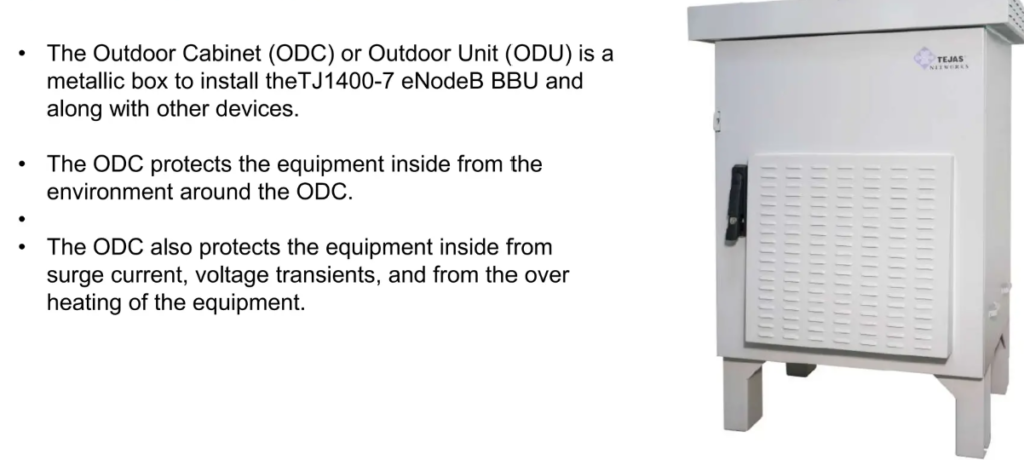The eNodeB (eNB) is a LTE network entity responsible for the transmission and reception of the radio interface in LTE networks. Its functions include modulation/demodulation, channel coding/decoding, and multiplexing/demultiplexing of radio channels.
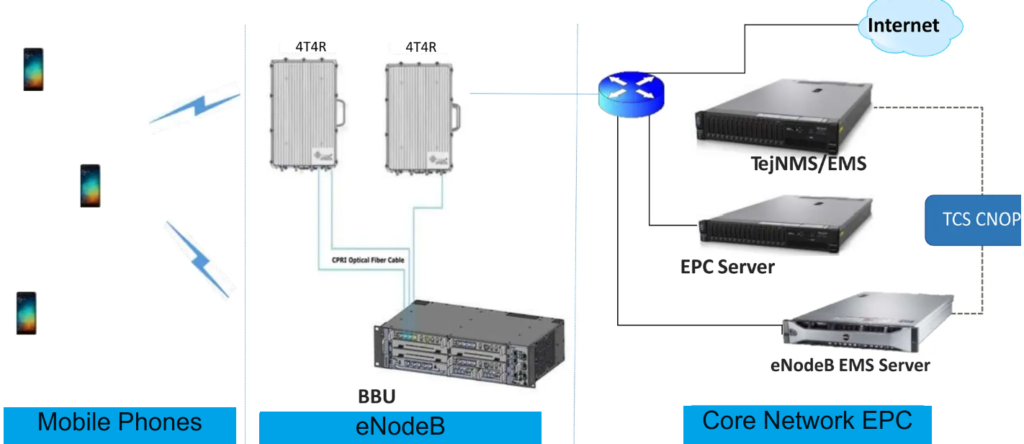
Below picture shows typical arrangement of eNodeB.
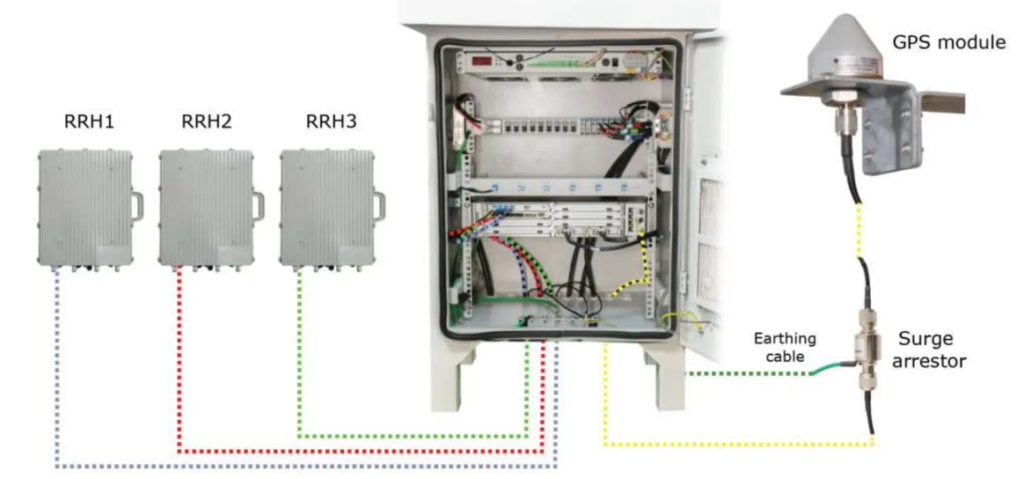
eNodeB Main Functions.
- Air Interface to UE.
- Dual Mode TDD, FDD.
- Radio Resource Management.
- Ciphering and Integrity Protection.
- Load Balanacing.
- IP Header Compression.
- Handover.
- Intercell Interference Coordination.

System Information Broadcasting.
In each cell, the eNB broadcasts system information on the downlink (DL) radio interface. This broadcast provides basic information that User Equipment (UEs) need to access the network.
RRC Functions.
The eNB hosts all Radio Resource Control (RRC) functions, which include:
- Paging: The eNB pages subscribers to establish communication.
- RRC Connection Control: This involves the establishment, modification, and release of RRC connections. It also includes the allocation of temporary UE identities (Radio Network Temporary Identifier, RNTI).
- Security Activation: The initial configuration of Access Stratum (AS) integrity protection for the control plane and AS ciphering for both control plane and user plane traffic is managed by the eNB.
- RRC Connection Mobility: The eNB handles intra-LTE handovers (both intra-frequency and inter-frequency). During handover, the source eNB manages associated security handling and provides the necessary key and algorithm information to the target cell by sending specific RRC context information embedded in a transparent container to the target eNB.
- DRBs Management: Establishment, modification, and release of Dedicated Radio Bearers (DRBs) that carry user data are also managed by the eNB.
- Radio Configuration Control: The eNB assigns and modifies parameters for Automatic Repeat reQuest (ARQ) and Hybrid ARQ (HARQ) as well as Discontinuous Reception (DRX) configuration.
- QoS Control: The eNB ensures that user plane packets of different connections are scheduled with the required priority for DL transmission and that UEs receive the scheduling grants for uplink (UL) data transmission according to the QoS parameters of the radio bearers.
- Recovery Functions: These functions allow the re-establishment of radio connections after physical channel failure or Radio Link Control Acknowledged Mode (RLC AM) retransmission errors.
Performance Measurement.
The most critical aspect of eNodeB performance measurement is the management of UL/DL resources and packet scheduling. This function is complex due to the need to balance various constraints such as radio link quality, user priority, requested QoS, and UE capabilities. The eNodeB is tasked with making the most efficient use of available resources to optimize network performance.
Measurement Management.
The eNB manages all kinds of measurements within LTE and across different radio access technologies (RATs). This includes:
- Setting up, modifying, and releasing measurements for different scenarios like intra-LTE (within the same frequency or between different frequencies) and inter-RAT (between LTE and other technologies) mobility.
- Handling transport channel quality assessments and internal UE measurements, which include power consumption and GPS positioning reports sent by the handset.
- For compressed mode measurements, the eNB configures, activates, and deactivates the necessary measurement gaps.
- Evaluating the measurement results reported by UEs and initiating necessary handover procedures. Unlike in 3G UMTS, where these functions were handled by the RNC, in LTE, they are managed by the eNB. This involves using various parameters like hysteresis values, time to trigger timers, and event level thresholds of RSRP (Received Signal Reference Power) and RSRQ (Received Signal Reference Quality).
Additional Functions.
Beyond measurements, the eNB handles several other tasks:
- Transferring dedicated NAS (Non-Access Stratum) information and non-3GPP dedicated information.
- Transferring UE radio access capability information.
- Supporting E-UTRAN sharing, which involves managing multiple Public Land Mobile Network (PLMN) identities.
- Managing multicast and broadcast services.
Self-Configuration and Self-Optimization.
One of the key features of the E-UTRAN is its support for self-configuration and self-optimization. This includes intelligent learning functions for automatic updates of neighbor cell lists, which are used for RRC measurement tasks and handover decisions.
User Plane and Control Plane.
The eNB is essential for user plane connections. It routes, multiplexes, ciphers/deciphers, segments, and reassembles data. Essentially, on the transport layer level, the eNB acts as an IP router and switch. It is also responsible for optional IP header compression. On the control plane level, the eNB selects the MME (Mobility Management Entity) to which NAS signaling messages are routed.
In summary, the eNB is a central component in LTE networks, handling everything from measurement management and handovers to data routing and control signaling, ensuring efficient and reliable communication.
Full Course on LTE RF Optimization (Explained by telecommunication industry experts).
eNodeB Components.
The main components of an eNodeB include:
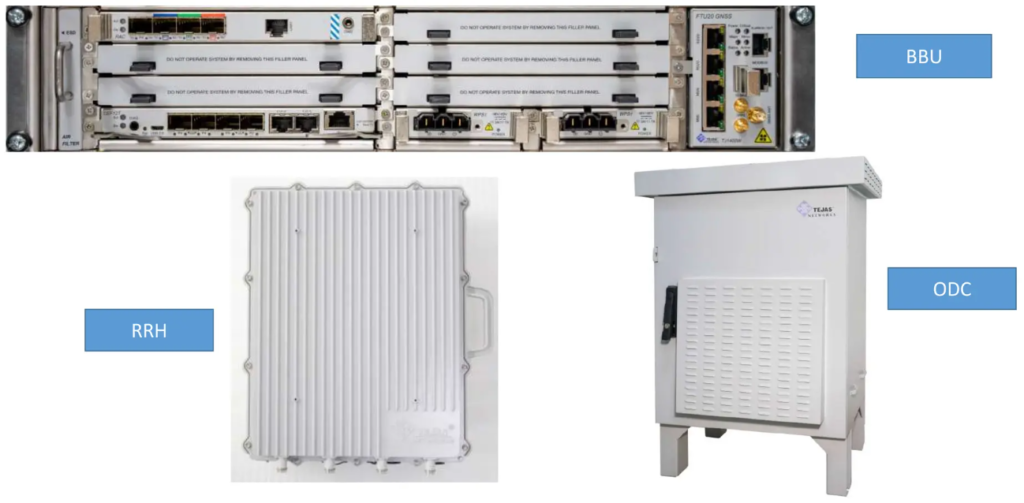
1. Baseband Unit (BBU).
The BBU is responsible for processing baseband signals. Its key functions include:
- Modulation and Demodulation: Converting digital signals to radio signals and vice versa.
- Coding and Decoding: Applying error correction codes to improve signal reliability.
- Scheduling: Managing the allocation of radio resources to different UEs.
- Ciphering and Deciphering: Encrypting and decrypting data to ensure secure communication.
BBU Components.
- RAC (Radio Access Card).
- CEF Card (Carrier Ethernet Forwarding).
- Fan Tray Unit (FTU).
- Air Filter.
- WPS.
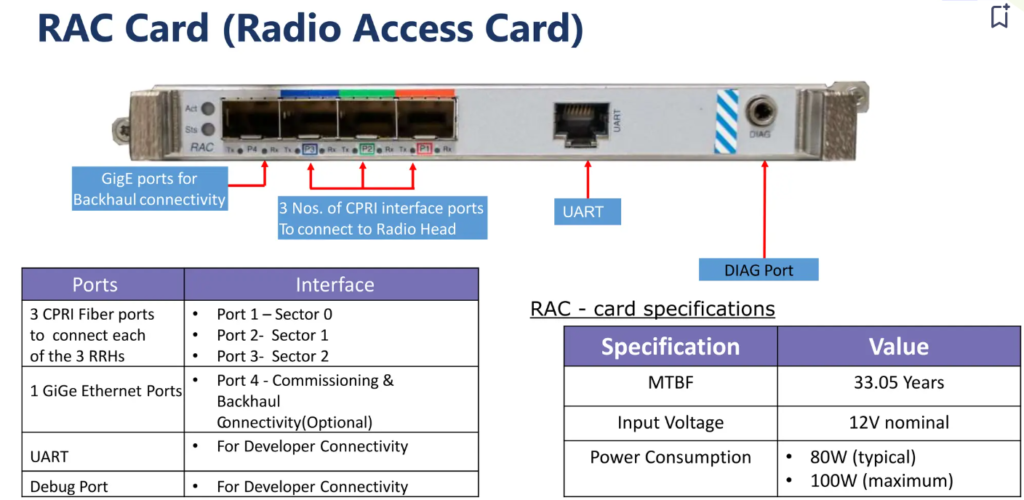
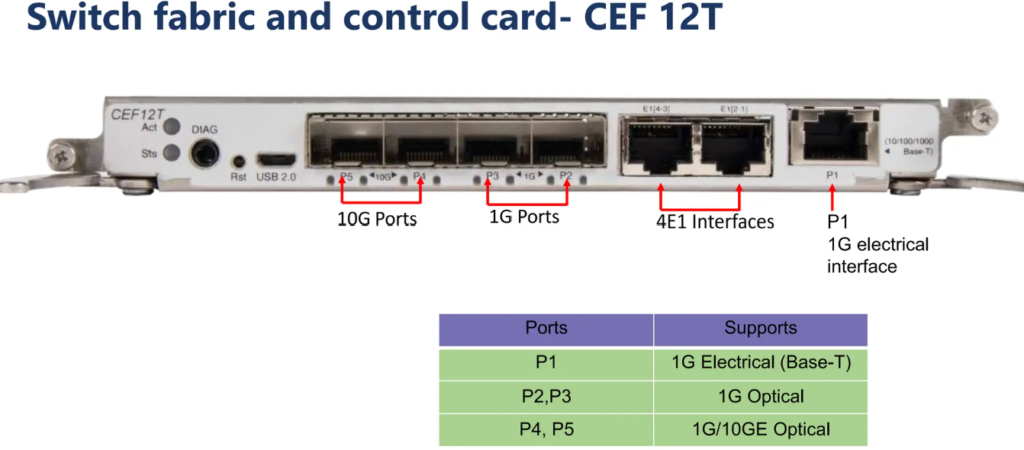

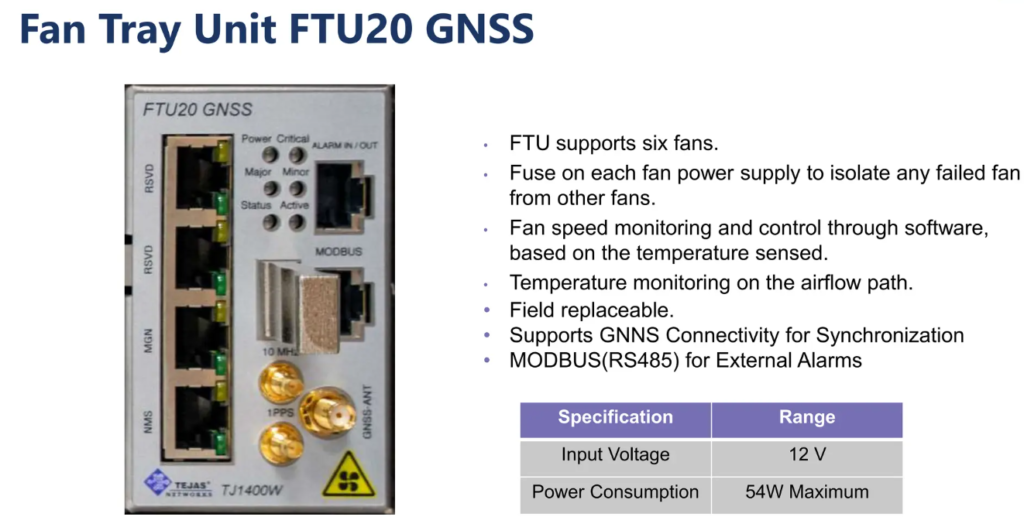
2. Remote Radio Head (RRH).
The RRH is located near the antennas and performs the following functions:
- Frequency Conversion: Converting baseband signals to radio frequency (RF) signals for transmission and converting received RF signals back to baseband.
- Amplification: Amplifying signals to ensure they are strong enough to reach UEs.
- Filtering: Removing unwanted noise and interference from the signals.

Remote Radio Head (RRH) Interface 4T4R.
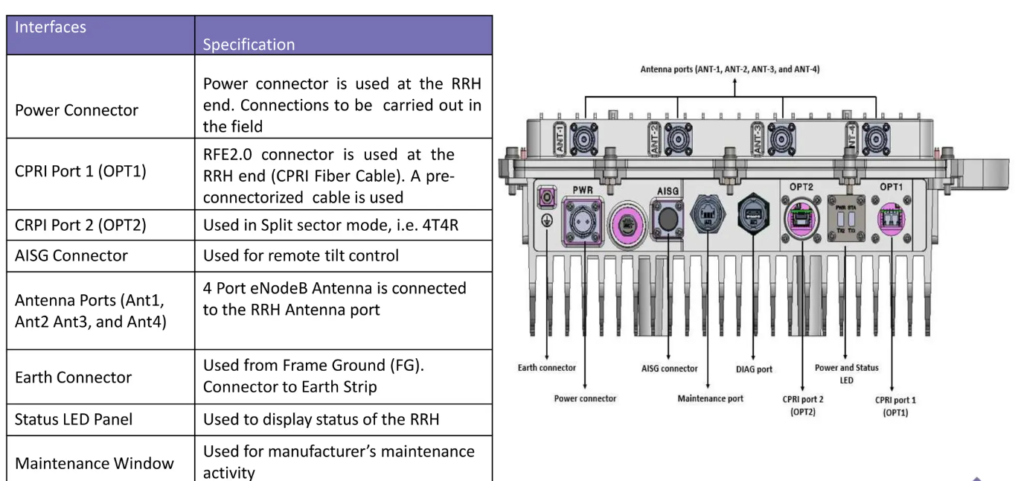
3. Antennas.
Antennas are used to transmit and receive radio signals. In LTE, MIMO (Multiple Input Multiple Output) technology is often used, which involves multiple antennas to improve signal quality and data rates.
- Transmit Antennas: Send radio signals to UEs.
- Receive Antennas: Capture incoming signals from UEs.
4. Control Unit.
The control unit manages the overall operation of the eNodeB. It coordinates various functions and ensures seamless communication within the network. Key tasks include:
- Handover Management: Facilitating smooth transitions of UEs between cells.
- Resource Management: Allocating resources efficiently to optimize network performance.
- Monitoring and Maintenance: Continuously checking the health of the eNodeB and performing necessary maintenance tasks.
5. Outdoor Cabinet (ODC).
